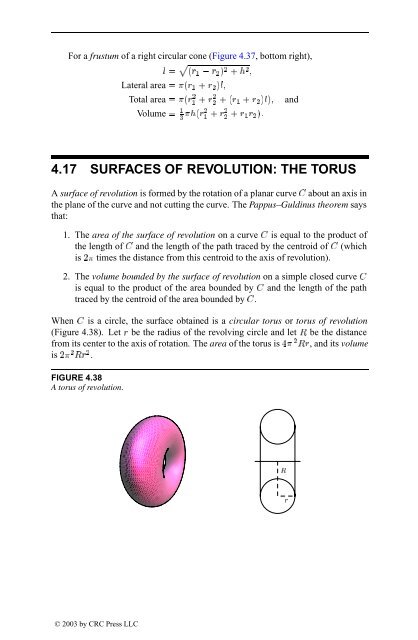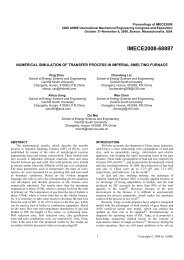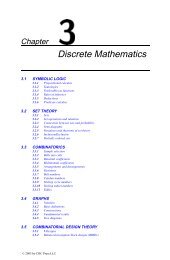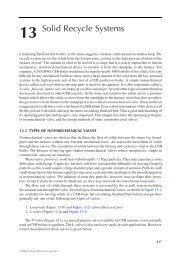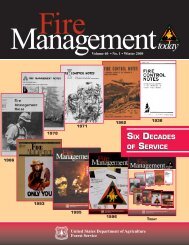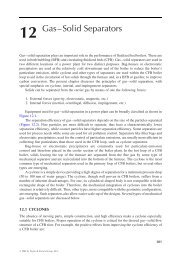Chapter 4: Geometry
Chapter 4: Geometry
Chapter 4: Geometry
Create successful ePaper yourself
Turn your PDF publications into a flip-book with our unique Google optimized e-Paper software.
For a frustum of a right circular cone (Figure 4.37, bottom right),<br />
Ô<br />
Ð ´Ö ½ Ö ¾ µ ¾ · ¾ <br />
Lateral area ´Ö ½ · Ö ¾ µÐ<br />
Total area ´Ö ¾ ½ · Ö¾ ¾ ·´Ö ½ · Ö ¾ µÐµ<br />
Volume ½ ¿ ´Ö¾ ½ · Ö¾ ¾ · Ö ½Ö ¾ µ<br />
and<br />
4.17 SURFACES OF REVOLUTION: THE TORUS<br />
A surface of revolution is formed by the rotation of a planar curve about an axis in<br />
the plane of the curve and not cutting the curve. The Pappus–Guldinus theorem says<br />
that:<br />
1. The area of the surface of revolution on a curve is equal to the product of<br />
the length of and the length of the path traced by the centroid of (which<br />
is ¾ times the distance from this centroid to the axis of revolution).<br />
2. The volume bounded by the surface of revolution on a simple closed curve <br />
is equal to the product of the area bounded by and the length of the path<br />
traced by the centroid of the area bounded by .<br />
When is a circle, the surface obtained is a circular torus or torus of revolution<br />
(Figure 4.38). Let Ö be the radius of the revolving circle and let Ê be the distance<br />
from its center to the axis of rotation. The area of the torus is ¾ ÊÖ, and its volume<br />
is ¾ ¾ ÊÖ ¾ .<br />
FIGURE 4.38<br />
A torus of revolution.<br />
Ê<br />
Ö<br />
© 2003 by CRC Press LLC


